Heating in a smart home: device and principle of operation + tips for organizing a smart system
The term “smart home,” not so long ago surprising society, is quite commonly accepted today. Actually, if we consider the level of household appliances that are used in almost every house, we can make a definite conclusion - the degree of automation is very high.
It is not surprising that the automatic control also affected heating in a smart home, which, thanks to innovations, significantly “wiser”. Let us consider this option more specifically, in order to get to know the device and all the advantages of smart heating more closely.
The content of the article:
Smart heating system strategy
No need to once again talk about how controversial the issue of heating residential premises is. It is directly related to the costs of energy consumption, and these costs significantly burden the family budget.
Therefore, the strategy of “smart” heating is a really important and worthwhile topic, not only to consider it, but also to try to implement it.
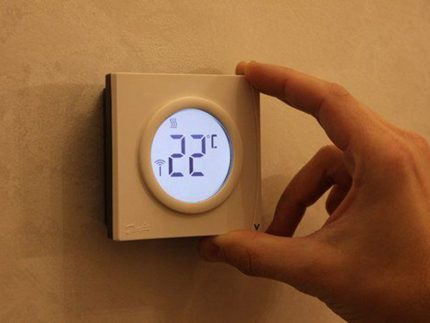
If apply smart home strategy to the heating system in full aspect, there is every chance to significantly reduce costs. Exact control of consumption and rational distribution of the heat resource will contribute to savings.
The strategy of a smart home in relation to the heating system has been calculated and tested in practice. The result promises the massiveness of this approach.
Smart Heat Supply Options
Actually, the principle is obvious - the construction of the heating circuit, taking into account the implementation of control sensors, as well as actuators at the points of energy distribution.
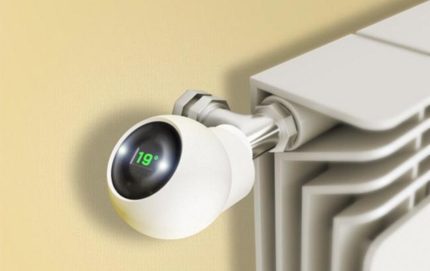
Control sensors and mechanics, in turn, are connected to the controller lines, equipped with control software.
In principle, everything is simple, given the development of control and management technologies through controllers.
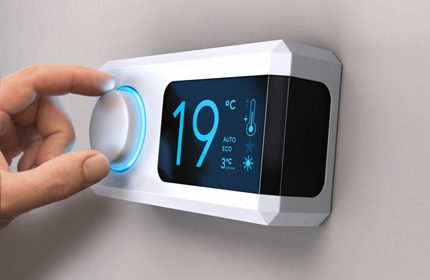
When considering possible options for schemes, of course, their application should be taken into account, depending on the type of housing and the place of its deployment.
Traditionally, there are two options:
- Urban sector.
- Country sector.
Heating systems for these two options are somewhat different, because in urban conditions, centralized heat supply is increasingly a priority.
The suburban sector is characterized by an autonomous heating system. Therefore, the “smart” heating solution for these two options may differ.
Solution # 1 - for a city apartment
Consider a possible smart heating scheme for a residential urban sector. Now, for the most part, urban infrastructure is already partially automated.
As a rule, there are coolant control systems in each individual apartment building. What remains to be done to the owner of an individual apartment?
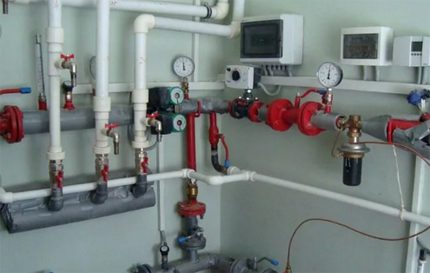
Inside one specific apartment of an apartment building, you can use the automated control system taking into account heat consumption. However, the general (house) distribution scheme of the coolant is important.
If this scheme has a sequential nature of turning on the devices, individual metering of energy consumption will fail, as well as a separate adjustment.
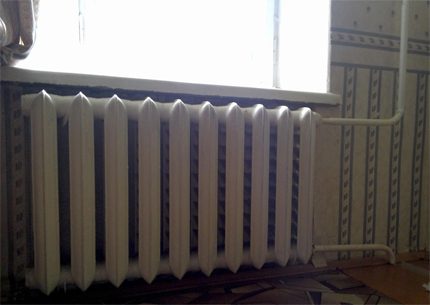
The parallel circuit of heating devices allows you to control consumption and keep records. This is done using the installation temperature sensors, regulators and controller.
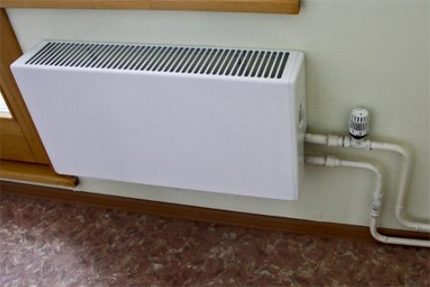
Temperature sensors are installed directly on the supply and return water lines, plus an internal temperature sensor is required.
On the return pipe of heating appliances are mounted control valves. All of these devices are combined with a control controller.
Solution # 2 - for a country house
The solution for a suburban or urban private autonomous house is characterized by unlimited possibilities.
Autonomous private economy, as a rule, operates on its own heat supply system, for example, from a boiler. In this option, automation is easier in terms of independence, but from a technical point of view it is somewhat more complicated.
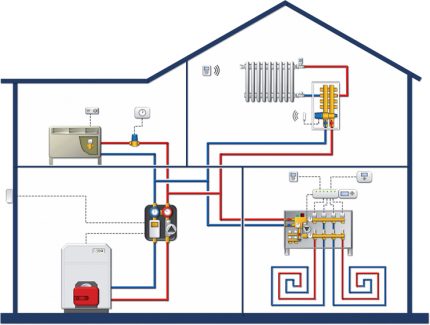
The difficulty is due to the use of automation and control not only to home heating appliances, but also directly to the heat source - the boiler.
The proposed designs of modern boiler equipment support full automation, including:
- fuel loading;
- combustion rate;
- carrier circulation;
- temperature limits;
- active timer.
If the apparatus of this particular configuration is used, it is enough to coordinate the heating control system of the smart home indoors with the boiler equipment controller. In another case, if there are structural features of the boiler, it will be necessary to initially automate the boiler installation.
Then, for example, the set temperature value on the sensor located indoors will be an additional reference point for the boiler controller.
Based on this guideline, fuel consumption, combustion rate and other operations of boiler equipment will be carried out.

However, it is permissible to create different temperature conditions in each individual room if an acceptable sealing of one room from another is ensured.
In this embodiment, the regulation of the heat flow is additionally carried out using individual thermostats and regulators that control the flow of coolant through the devices (batteries, underfloor heating system).
Benefits of full heating automation
Before discussing the benefits of smart heating, a kind of initial flaw for the end user should be noted.
Arranging a system of this kind, you will have to spend money on the purchase of the required components, as well as on installation and configuration.
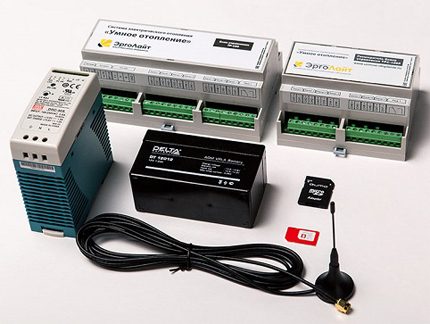
Of course, the possibility of doing it yourself is not ruled out. However, to implement this option, you must have the status of a highly qualified specialist, or a jack of all trades. But the cost of the device system is ultimately offset in full.
The average calculations showed up to 30% savings on costs attributable to heating in the cold season. Thus, a smart heating device pays off in a short period.
Among the obvious advantages of the technology, the ability to control all parameters directly from a phone or tablet stands out.
Modern smartphones allow the installation of special applications through which monitoring and tuning of the parameters of the heating system are performed.

An obvious advantage of such systems is the factor of an accurate and stable temperature background.
Moreover, using the application, you can configure the desired mode at a certain time of day: it is cooler at night for a quiet sleep, and one hour before returning from work - a gradual increase in temperature.
When inside the room “it’s not cold - not hot”, that is, the temperature background is optimal for the body, the risk of colds is sharply reduced. Under such conditions, the body is in the active phase, a person feels a state of comfort.
The advantage is also the convenience factor. There is no need to turn the taps, measure the temperature with a thermometer. All these actions will be performed with high accuracy by automation. In addition, it becomes possible to take into account the energy consumed. And this, again, is a saving.
Features of the arrangement of "smart" heating
The most important thing that can be attributed to the recommendations for arranging the heating systems of a smart home is the use of high-quality adjusting equipment, as well as reliable filters.
Effective filtration of the coolant flow and the use of reliable control mechanisms contribute to the accurate and flawless operation of the system.
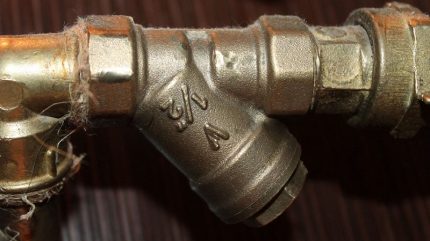
Automated modules based on controllers provide a high degree of sensitivity, allow you to regulate processes with an accuracy of one percent.
However, in the absence of filter modules, the operation of flow controllers may be disrupted after a short operation time.
It is recommended to technically correctly calculate and select the installation points of thermostats (sensors, sensors), since a correctly selected installation location allows to achieve the maximum regulation effect in general. Information on effective locations can always be found in the instrument passport.
Conclusions and useful video on the topic
In the next video, a rather interesting option is proposed for introducing automation of the heating system:
Technology is pushing society forward. The level of comfort and amenities is increasing. A vivid example of this is the heating system of a private house or apartment, endowed with the functions of full control of the process without human intervention. The user only needs to determine the level of comfort to get the desired microclimate throughout the house and in addition a substantial savings.
If you have valuable information on arranging heating in a smart home system, please share it with our readers. Leave your comments, ask questions in the block under the article.

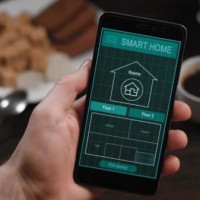 What is a smart home: the principle of operation and device + creating a project and assembly tips
What is a smart home: the principle of operation and device + creating a project and assembly tips  Climate control for home and apartment: device and system advantages + subtleties of choice and installation
Climate control for home and apartment: device and system advantages + subtleties of choice and installation 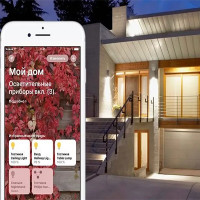 Apple smart home: the intricacies of organizing home control systems from the apple company
Apple smart home: the intricacies of organizing home control systems from the apple company  The Smart Home system for a country house: advanced devices for automatic control
The Smart Home system for a country house: advanced devices for automatic control 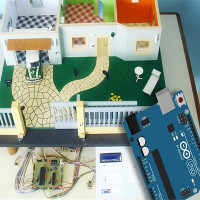 Smart home based on Arduino controllers: design and organization of controlled space
Smart home based on Arduino controllers: design and organization of controlled space 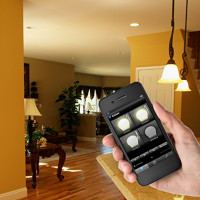 Remote lighting control: types of systems, equipment selection + installation rules
Remote lighting control: types of systems, equipment selection + installation rules  How much does it cost to connect gas to a private house: the price of organizing gas supply
How much does it cost to connect gas to a private house: the price of organizing gas supply  The best washing machines with dryer: model rating and customer tips
The best washing machines with dryer: model rating and customer tips  What is the color temperature of light and the nuances of choosing the temperature of the lamps to suit your needs
What is the color temperature of light and the nuances of choosing the temperature of the lamps to suit your needs  Replacement of a geyser in an apartment: replacement paperwork + basic norms and requirements
Replacement of a geyser in an apartment: replacement paperwork + basic norms and requirements